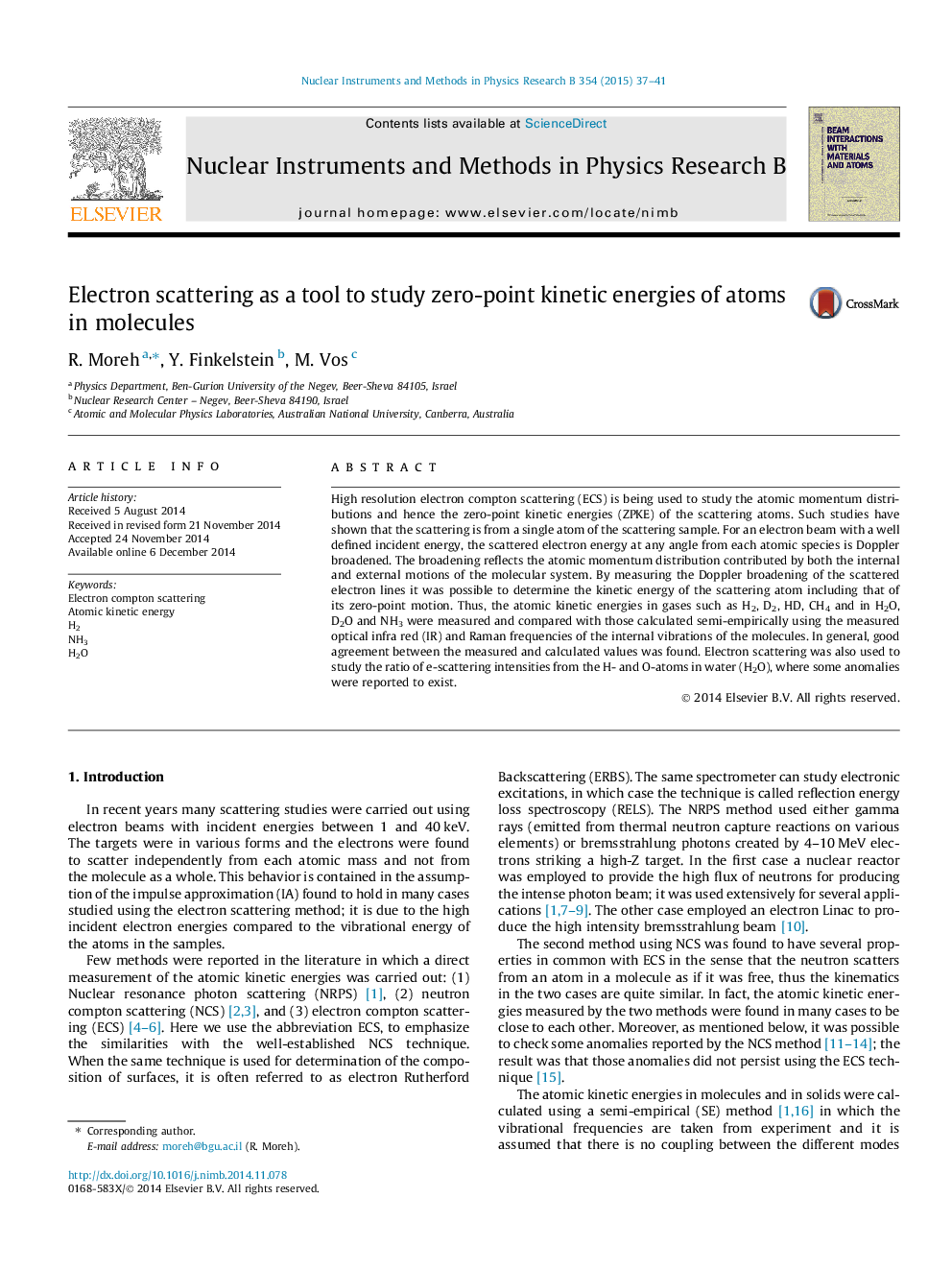| Article ID | Journal | Published Year | Pages | File Type |
|---|---|---|---|---|
| 8040776 | Nuclear Instruments and Methods in Physics Research Section B: Beam Interactions with Materials and Atoms | 2015 | 5 Pages |
Abstract
High resolution electron compton scattering (ECS) is being used to study the atomic momentum distributions and hence the zero-point kinetic energies (ZPKE) of the scattering atoms. Such studies have shown that the scattering is from a single atom of the scattering sample. For an electron beam with a well defined incident energy, the scattered electron energy at any angle from each atomic species is Doppler broadened. The broadening reflects the atomic momentum distribution contributed by both the internal and external motions of the molecular system. By measuring the Doppler broadening of the scattered electron lines it was possible to determine the kinetic energy of the scattering atom including that of its zero-point motion. Thus, the atomic kinetic energies in gases such as H2, D2, HD, CH4 and in H2O, D2O and NH3 were measured and compared with those calculated semi-empirically using the measured optical infra red (IR) and Raman frequencies of the internal vibrations of the molecules. In general, good agreement between the measured and calculated values was found. Electron scattering was also used to study the ratio of e-scattering intensities from the H- and O-atoms in water (H2O), where some anomalies were reported to exist.
Related Topics
Physical Sciences and Engineering
Materials Science
Surfaces, Coatings and Films
Authors
R. Moreh, Y. Finkelstein, M. Vos,
